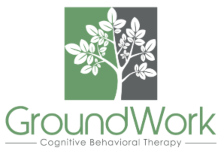Empowering Yourself with Self-Directed CBT Tools for Anxiety
 Anxiety can often feel overwhelming, leaving you unsure where to turn or how to begin regaining control of your life. The good news is there are effective, evidence-based strategies available that can help you not only manage but also overcome anxiety. One of these powerful approaches is Cognitive Behavioral Therapy (CBT). Even more empowering? You can integrate self-directed CBT tools into your daily life to further amplify the benefits of therapy.
Anxiety can often feel overwhelming, leaving you unsure where to turn or how to begin regaining control of your life. The good news is there are effective, evidence-based strategies available that can help you not only manage but also overcome anxiety. One of these powerful approaches is Cognitive Behavioral Therapy (CBT). Even more empowering? You can integrate self-directed CBT tools into your daily life to further amplify the benefits of therapy.
This blog will explore the essentials of CBT, introduce self-directed tools for tackling anxiety, and provide helpful tips on how to use these tools to take charge of your mental health.
What is CBT?
Cognitive Behavioral Therapy, or CBT, is a well-researched, evidence-based psychotherapy approach that focuses on understanding your thoughts, feelings, and behaviors—and how they interact. CBT is widely regarded as one of the most effective treatments for anxiety disorders, including generalized anxiety, social anxiety, phobias, and panic disorders.
Rather than merely addressing symptoms, CBT equips individuals with practical skills to shift unhelpful thinking patterns, tolerate discomfort, and build resilience. It is collaborative and goal-oriented, making it accessible to a wide range of people.
The Basics of Self-Directed CBT
Self-directed CBT is exactly what it sounds like—applying CBT techniques on your own, outside of therapy sessions. Even if you’re currently working with a therapist, practicing these tools independently between sessions helps you generalize and strengthen your skills. Think of it as mental fitness; the more you practice, the stronger those skills become.
Completing CBT “homework” is a critical part of ensuring that the progress you make in sessions translates into your everyday life. These simple, actionable assignments might involve keeping track of your anxious thoughts, testing them with reality-based evidence, or gradually confronting fears.
Self-directed CBT empowers you to take an active role in your own recovery, providing greater confidence and long-term success in managing anxiety.
Self-Directed CBT Tools for Anxiety
The following CBT techniques can be practiced independently and are foundational for addressing anxiety:
Cognitive Restructuring
Cognitive restructuring involves identifying and challenging unhelpful or distorted thought patterns that fuel anxiety. These thoughts, known as cognitive distortions, often include “catastrophizing,” “black-and-white thinking,” or “mind-reading.”
To apply cognitive restructuring:
- Write down your anxious thought. For example, “If I fail this presentation, my career will be over.”
- Challenge it by asking evidence-based questions. “What proof do I have this is true? What’s the most realistic outcome?”
- Replace it with a balanced alternative. For instance, “It’s natural to be nervous, but I’ve prepared well, and one presentation won’t define my career.”
Exposure Therapy
Avoidance is a hallmark of anxiety, and while it might provide short-term relief, it only reinforces fears in the long run. Exposure therapy is the gradual process of confronting your fears in safe, controlled ways to reduce their intensity over time.
For example, if you have social anxiety, start by making eye contact with a passerby and eventually progress to initiating a short conversation with a stranger.
Problem-solving Skills
Anxiety can often feel paralyzing when faced with complex problems. Strengthen your coping skills with structured problem-solving.
The steps include:
- Clearly identify the problem.
- Brainstorm potential solutions without judgment.
- Weigh the pros and cons of each option.
- Choose one and implement it.
- Reflect on the outcome and adjust if necessary.
Breaking down a daunting issue into actionable steps can make it feel manageable and reduce the sense of overwhelm.
Learning to Tolerate Discomfort
Much of anxiety management revolves around increasing discomfort tolerance. Instead of avoiding unpleasant sensations or feelings, mindfulness-based practices or grounding techniques can teach you to sit with these discomforts without reacting.
A simple way to practice is to focus on your breath during moments of anxiety. Allow the sensation to be present without judgment, and remind yourself that anxiety, though uncomfortable, is not dangerous. Over time, this practice can build confidence in your ability to handle tough situations.
Tips for Integrating CBT Tools into Daily Life
1. Create a Routine
Set aside dedicated time each day to practice CBT techniques, even if it’s just 10–15 minutes. Consistency is key to building these new habits.
2. Use a Journal
Keep track of your thoughts, situations, and progress in a dedicated CBT journal. Seeing your growth on paper can reinforce your commitment and highlight how these tools are working.
3. Be Patient with Yourself
Change doesn’t happen overnight. Recognize that this is a process, and small steps add up to meaningful progress.
4. Seek Guidance When Needed
Self-directed tools work best in conjunction with therapy. Don’t hesitate to reach out to a professional for guidance, troubleshooting, or additional resources.
Take Charge of Your Anxiety Today
Empowering yourself with self-directed CBT tools is not just about managing anxiety; it’s about taking back control and building a life aligned with your values. Start small, practice regularly, and trust in your ability to make meaningful progress.
If you’re looking for personalized support, Groundwork CBT specializes in effective, compassionate therapy tailored to those dealing with anxiety. Contact us today to schedule a session and take the next step in your mental health journey.
Where You’ve Seen Us
Our clinicians are experts in the field and contributors to important conversations about mental health.
Ready To Make A Change?
GroundWork is proud to offer both in-person &
virtual Telehealth appointments.
In-Person Sessions: Central Florida
Virtual Sessions: Florida, Maine, South Carolina, Montana, Vermont




















